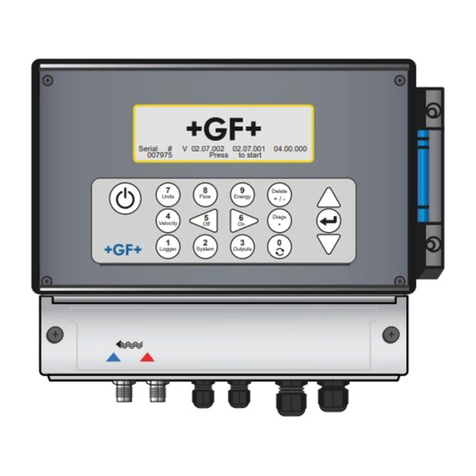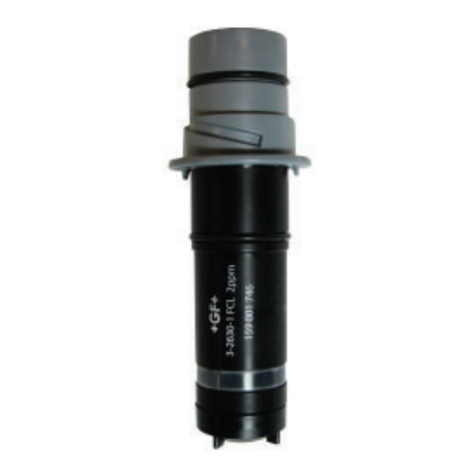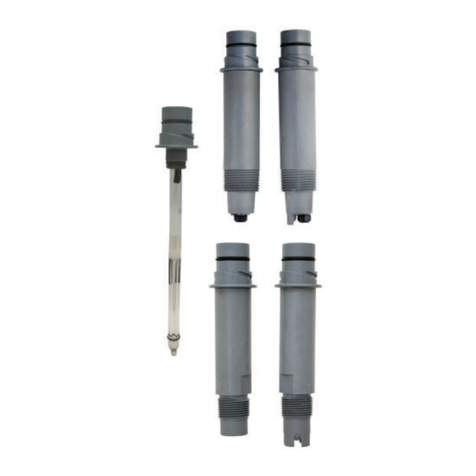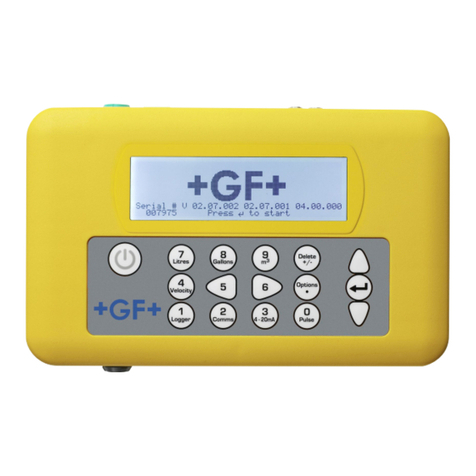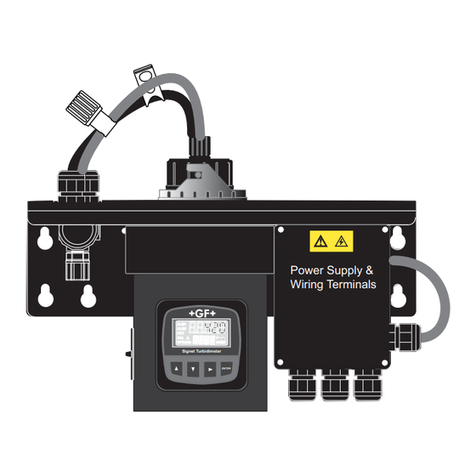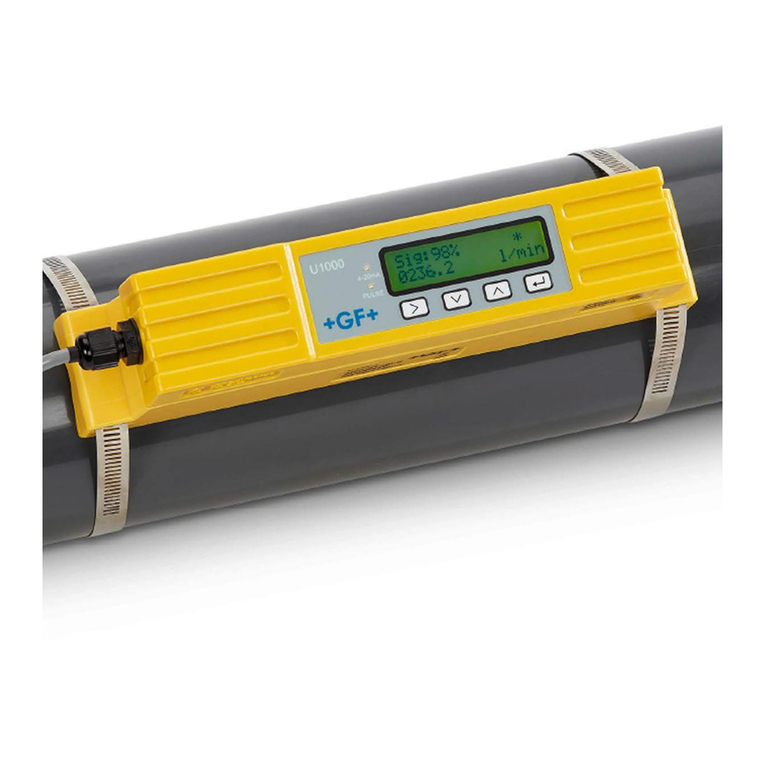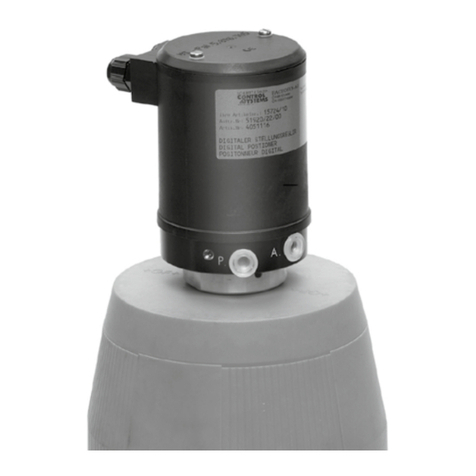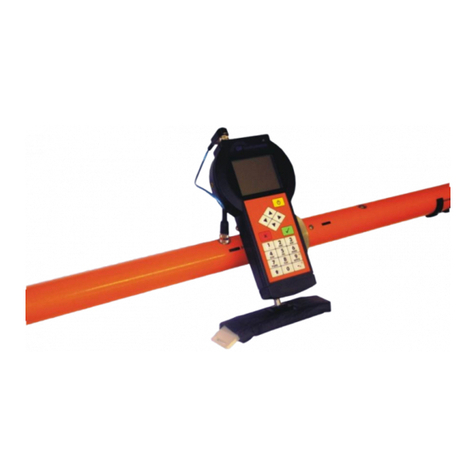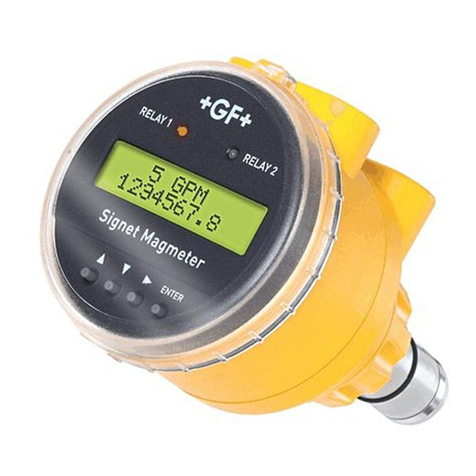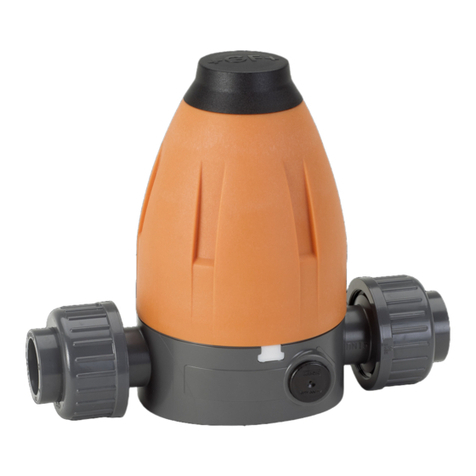
2463X Chlorine Systems Manual
Description ..................................................................................... 1
Warranty Information...................................................................... 2
Safety Information.......................................................................... 2
Chlorine System Dimensions / Specifications ............................... 3
Mounting / System Inventory ......................................................... 4
Quick Start ..................................................................................... 4
9950-3 Operation / Terminal Identification..................................... 5
Panel Assembly.............................................................................. 6
Component Identification: Flow Cell .............................................. 7
Wiring
3-9950-3 Input Power Wiring ..................................................... 8
4 to 20 mA Wiring Loop 1 & 2 .................................................... 8
9950 Dual Channel 4 to 20 mA Module..................................... 8
3-9950.393-3 Standard with 9950-3 .......................................... 9
3-9950.393-3 with internally powered flow switch ..................... 9
Sensor Wiring............................................................................. 9
Chlorine Sensor Preparation / Maintenance ............................... 10
Sensor Installation.........................................................................11
Tubing Connections ..................................................................... 12
Water Flow ................................................................................... 12
9950-3 Chlorine Controller
Calibration ........................................................................... 13-15
Signal Type: Digital (S³L) ......................................................... 16
Module Installation ................................................................... 16
Plug-In Modules ....................................................................... 17
Loop and Modbus Modules ..................................................... 17
Relay Modes ....................................................................... 18-21
Chemical Guard ....................................................................... 19
Standard Relay Mode .............................................................. 20
Menu System
View Mode Overview ............................................................... 22
Menu Mode Overview.............................................................. 22
Password Overview ................................................................. 22
View Mode .............................................................................. 23-24
Calibration .................................................................................... 25
Chlorine Electrode Calibration ................................................. 25
pH Electrode Calibration.......................................................... 26
Input Menu .............................................................................. 27-28
4 to 20 mA Output (Loop Output)................................................. 29
Relay Menu
Chemical Guard Menu........................................................ 30-31
Standard Relay Menu .............................................................. 32
Option Menu........................................................................ 33-34
Modbus Menu ......................................................................... 35-36
9950 Field Software Upgrade / Updating the 9950 ..................... 37
Troubleshooting ...................................................................... 38-39
Calibration Error Messages ......................................................... 39
2630 Free Cl / 2632 ClO
2
Electrode ....................................... 40-42
2724 DryLoc pH Electrode........................................................... 43
pH System Calibration ............................................................ 44-45
Buffer Solutions............................................................................ 45
Electrode Storage ........................................................................ 45
463X Chlorine Analyzer Flow Cell ............................................... 46
O-ring Installation ......................................................................... 47
Flow Cell Assembly...................................................................... 48
Troubleshooting
463X Chlorine Analyzer ........................................................... 49
9950-3 Chlorine Controller....................................................... 50
9950-3 Error Messages ........................................................... 51
2630 Free Cl / 2632 ClO
2
Electrodes ...................................... 52
2751-7 pH Electronics.............................................................. 52
Specifications
9950-3 Chlorine Controller....................................................... 53
2650 DryLoc
®
Amperometric Electronics................................. 54
2751-7 pH Electronics.............................................................. 54
2630 Free Cl / 2632 ClO
2
Electrodes ...................................... 55
2724 DryLoc
®
pH Electrode ..................................................... 56
Notes............................................................................................ 57
Ordering Information .................................................................... 58
Warranty Information Table of Contents
Safety Information
Refer to your local Georg Fischer Sales office for the most
current warranty statement.
All warranty and non-warranty repairs being returned must
include a fully completed Service Form and goods must be
returned to your local GF Sales office or distributor.
Product returned without a Service Form may not be
warranty replaced or repaired.
GF products with limited shelf-life (e.g. pH, ORP, chlorine
electrodes, calibration solutions; e.g. pH buffers, turbidity
standards or other solutions) are warranted out of box but not
warranted against any damage, due to process or application
failures (e.g. high temperature,
chemical poisoning, dry-out)
or mishandling (e.g. broken glass,
damaged membrane,
freezing and/or extreme temperatures).
Caution / Warning / Danger
Indicates a potential hazard. Failure to follow all warnings
may lead to equipment damage, injury, or death.
Electrocution Danger
Alerts user to risk of
potential of injury or death via
electrocution.
Electrostatic Discharge (ESD)
Alerts user to risk of potential damage to product by ESD.
Personal Protective Equipment (PPE)
Always utilize the most appropriate PPE during
installation and service of GF products.
Pressurized System Warning
Sensor may be under pressure, take caution to vent
system prior to installation or removal. Failure to do so
may result in equipment damage and/or serious injury.
Hand Tighten Only
Overtightening may permanently damage product threads
and lead to failure of the retaining nut.
Do Not Use Tools
Use of tool(s) may damage product beyond repair and
potentially void product warranty.
Note / Technical Notes
Highlights additional information or detailed procedure.
DO NOT
FREEZE
Do Not Freeze
Products are temperature sensitive and may contain
freezable liquids. Freezing damage to pH, ORP, and
Chlorine electrodes voids product warranty.

